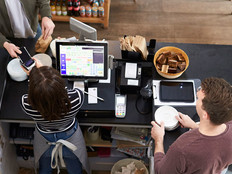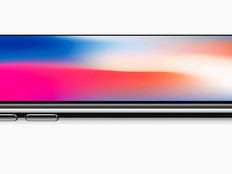Forecast: Sunny Times for Smartphones and Tablets
With the introduction of the iPad in April 2010, Apple struck a nerve. Overnight, the company took the tablet computer, an all-but-nonexistent personal computing category (despite earlier attempts by other companies to manifest this category), and transformed it into a major pillar of the computer market.
Competitors quickly followed suit, some with more success (e.g., the Samsung Galaxy Tab, Google Nexus and Amazon Kindle Fire) than others. Today, according to a new Pew Research Center report, one in three (34 percent) American adults 18 or older own a tablet. That’s nearly double the 18 percent from a year ago.
Results of a similar Pew Research Center survey indicate that 56 percent of American adults identify themselves as smartphone owners, with a mere 9 percent of the country’s adults saying they don’t own a cell phone at all. Although smartphones are based on the same operating systems (iOS, Android) as the majority of tablets, smartphones are a more mature mobile-device category, hence the far greater market penetration.
Tablet adoption skews older than smartphone adoption, which is likely due to the higher cost of tablets, in general, and a trend among businesses to swap notebooks for tablets. So, whereas smartphones are more popular among younger adults between the ages of 18 and 24 (with a rate of 79 percent) and between 25 and 34 (81 percent), tablet ownership is highest with users between 35 and 44 (49 percent).
"One of the things that is especially interesting about tablet adoption compared to some of the patterns of other devices we've studied is how these technologies’ growth has played out between different age groups," notes Pew research analyst Kathryn Zickuhr. "With smartphones, for instance, we’ve seen a very strong correlation with age where most younger adults own smartphones, regardless of income level. But when it comes to tablets, adults in their thirties and forties are now significantly more likely than any other age group to own this device."
Rise of the Touch-Screen Machines
IDC predicts tablet shipments should surpass portable PCs (i.e., notebooks) for the first time in 2013, and in two years tablets should eclipse total PC shipments in 2015.
In a new report, IDC forecasts manufacturers will move 229.3 million tablets this year, up from 144.5 million in 2012 — a 58.7 percent increase.
Low-cost Android models fuel the tablet market’s remarkable surge. Over 2013, IDC expects the average selling price of tablets to fall by 10.8 percent, to $381, nearly half that of PCs. And with prices expected to continue to fall, the tablet market is rapidly meeting price points long dreamed of by PC makers, putting computers into the hands of a wider swath of consumers.
Greater choice in screen size is also driving the tablet explosion. It all started with the original 9.7-inch iPads, but the success of 7-inch Android-powered tablets proved consumers were open to variety and something a bit more comfortable to hold. Apple responded to the popularity of these smaller Google-run models by releasing the iPad mini last fall. And now, just a couple of quarters later, shipments of the sub-8-inch category have already overtaken larger tablets.
"What started as a sign of tough economic times has quickly shifted to a change in the global computing paradigm with mobile being the primary benefactor," says Ryan Reith, program manager for IDC's Mobility Trackers. "Tablets surpassing portables in 2013, and total PCs in 2015, marks a significant change in consumer attitudes about compute devices and the applications and ecosystems that power them.”
The notebook isn’t about to go away. There are simply too many things you can still do with a full-fledged PC, keyboard and mouse that are not possible (or particularly easy) with a touch screen. But tablets do fulfill consumers’ needs, and that has catapulted the devices to the front of the pack.








